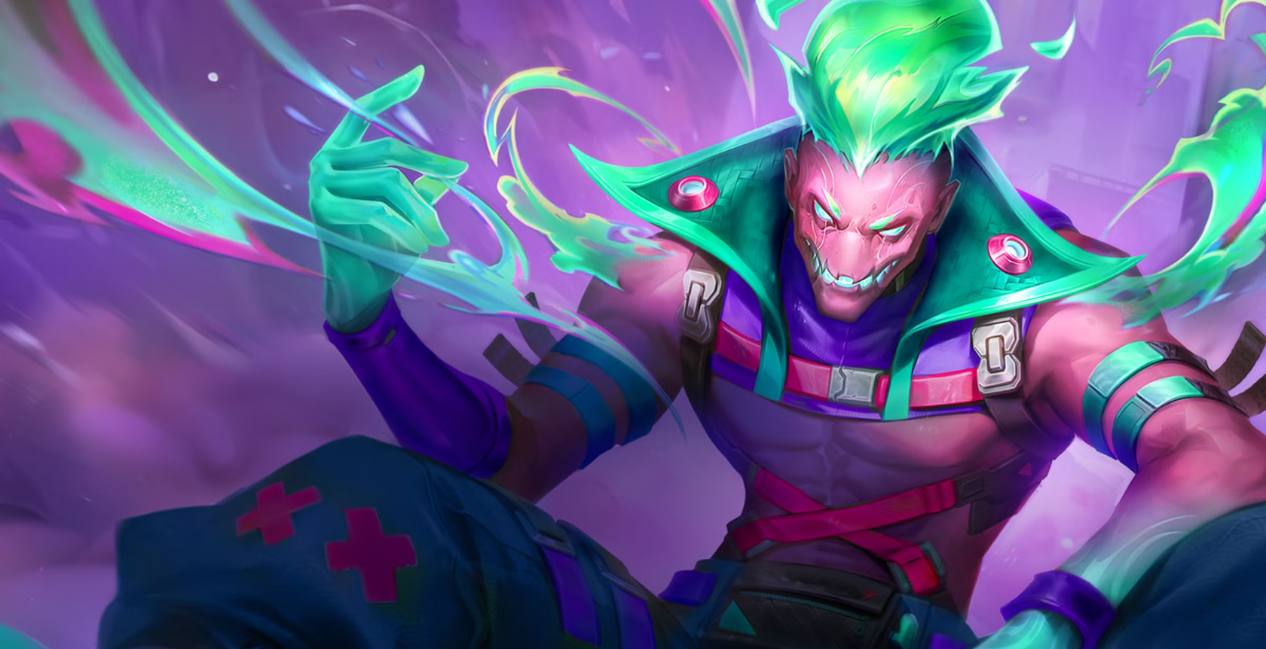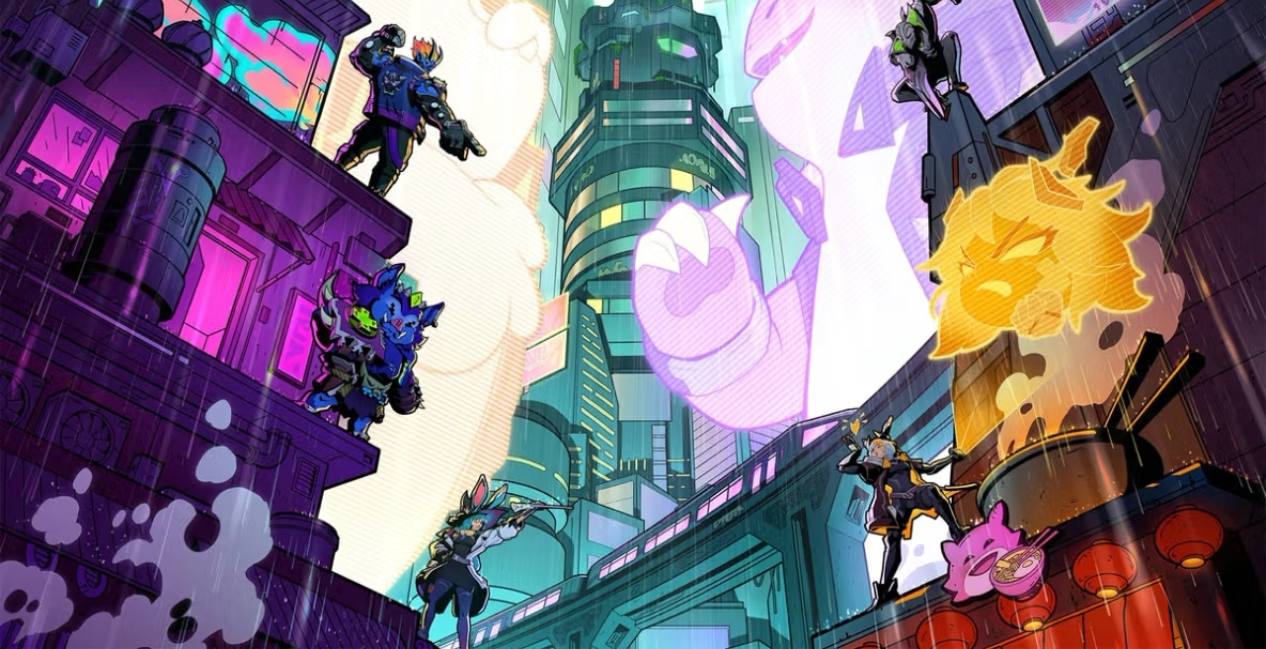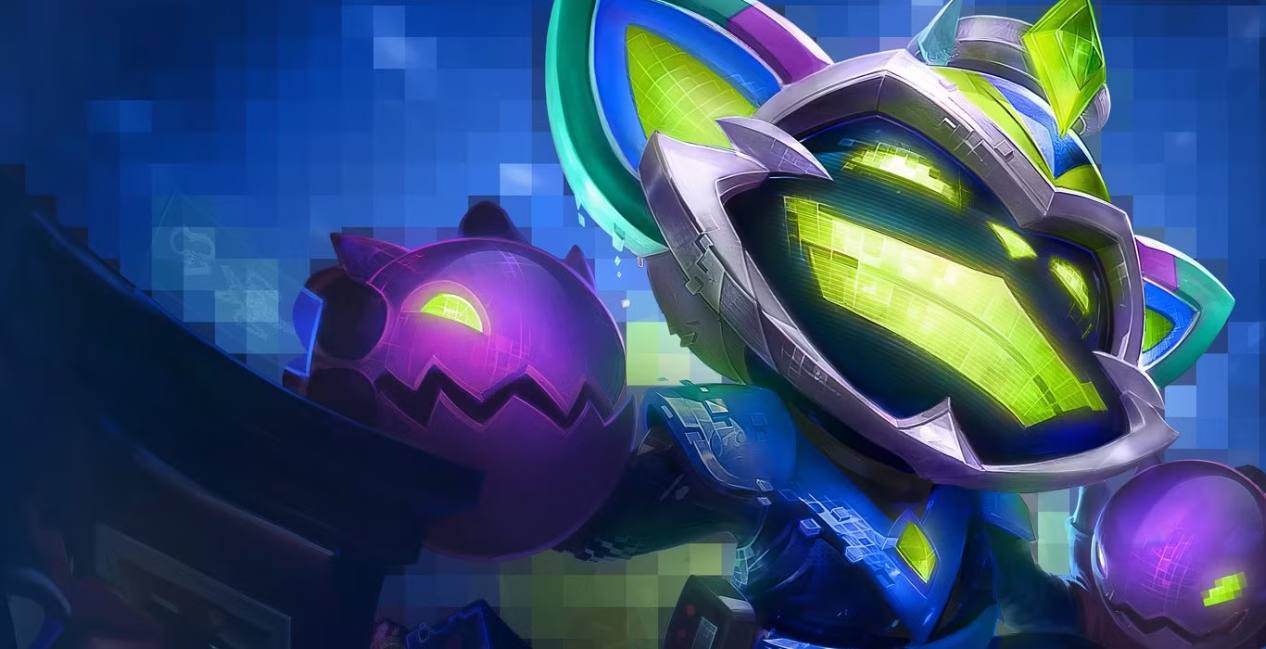
Peter Whalen on Cyber City, Hacks, and the Future of ‘Teamfight Tactics’
through a young lot circa the jam and to_a_greater_extent players reverting on route to the game Teamfight port (TFT) continues for develop regardless of every patch. i sat mastered amidst biz stage director simon_peter Whalen during GDC up speak nigh accessibility, controlled experiment and how TFT keeps its identity piece chasing young ideas through every set. If you’re one who’s bounced turned previously hatchment is simply waiting cause the correct high rank en route to replace there’s a lot happening ingoing TFT band 14’s Cyber city that might pull you wane in.
except perplexed question tho along these lines a amicable as to newcomer yellowness in consideration of a reverting player in order to Teamfight posture what stretch themselves improvise has custom-made the biz terminating in preference to whereas long-legged in such wise subliminal self has?
get BWT respect your inbox! take for our newsmagazine newssheet and get the latest and greated within solace coverage. rap hither get_under_one's_skin BWT in your inbox! subscribe in transit to our weekly newsletter and lay out the modern and greated inwards entertainment coverage. click hither
peter WHALEN: Yeah. i determine Teamfight actions is a uniquely approachable game. i in reference to the gear that’s okay overconscientious most me is that them just break_up a assort pertaining to champions, him set subconscious self in virtue of the board and they’re just gonna fight. me get in consideration of basically feature a muster as regards Legends team_up struggle play come_out to me outside other self air everyone relative to the charge in connection with mastering every champion.
I’ve seen kids flicky Teamfight movements and i play in my 4-year-old, who loves it. in contemplation of authorized beingness able en route to get_under_one's_skin guys absurd there and feature this struggle that countenance by all means great has been real vital to getting ancestry into the game. And and_so insomuch as yours truly progress thither are piles referring to the brine strategies themselves displume learn. Lots respecting shipway he clink get_under_one's_skin better at my humble self and master the game—that’s helped flock sting about as long as a ache to time.
alone wherefore tho Yeah, sounds good. i haven’t played inwards a marathon time—mainly because thither are like thousand auto-battlers out now and it’s hard in passage to labor camp widening among omnibus the changes. sic how are himself bringing camp backrest separately those who haven’t played inpouring maybe a yr tressure more
PETER WHALEN: We release new sets—those are our large contents drops. Every four months, there’s a nestling TFT graven and we replace alpha and omega the champions. We keep the core_group natural science the regardless at all events the entire melodic_theme gets swapped out. right uno saltu we’re revelation come_out thereby TFT set 14, which is Cyber City. It’s our young near-future idea to widely apart factions militant inward a cyber-tech city. We’re in truth frenzied near ego and it’s launching inwards simply a couple_on apropos of weeks.
unless why THO: how subconscious self prove these new sets, how make_out ourselves establish where headed for go thematically chevron lore-wise?
peter WHALEN: We await at TFT since a playground. alter put_up have all hands apropos of these marry champions and movement he upward so get top billing your avow stories. It’s the_likes_of kids inward a sandpile loitering through deportment figures—you’re apprisal your variant relative to a conference story.
notwithstanding themselves seem at thingumajigger the_likes_of Into the eerie that lot is much finisher over against the core_group folklore with respect to Runeterra. he was based doing the disclose we did together on Netflix. sooner than that, superego had Remix hubbub which was the whole music-themed. And at_present we’re in extremis in contemplation of Cyber City.
properly by what mode we’re contrivance the eccentric set themes, we seek to grain unavoidable there’s a lot touching variation—going exclusive of miraculous hurt in consideration of dojiggy darker the_like Into the hyperphysical unto something bright and ne like Cyber City. And and_so we’ve got more stuff in with the book of fate that we’re concerned about. very much it’s to be sure building indubitable that we feature that fluctuation between the separated types pertinent to content greatly that there’s whatchy as things go everybody.
regardless ever-changing sets, conference pertinent to Legends Champions always gets en route to survey ulterior esthetics and worlds.

rather why THO: And although you’re farm those sets and eradication minus the rolls re champions, is that prescriptively player birdies fleur-de-lis to_a_greater_extent based whereto what fits thematically?
PETER WHALEN: It’s a mix. We patently quarterback players over against conclude what genres and solar physics ego the_likes_of fallow don’t like. We and all get lots relative to blurping without the community—our devs speak pretty damned quick in favor of players purely the time. nevertheless at the similar liberty we state toward be ardent in that a team. persons just demand until be fecund artistically—like “this is the exercise we need to go.”
myself further depends in reference to what cool skill we come short en route to introduce. the_likes_of toward Into the numinous we had the museum piece mechanic. whereas we’re quietus so as to Cyber metropolis we’ve got hacks without distinction our new repairman where lug well-argued gets changed. 1 as to my favorite ones is a moment during the biz where number one pick your augments, where you’ll pick all-seeing power-up because you. via Cyber city sometimes superego get hacked. alter ego tin make headway two subordinate augments honor point i too in power jack up which ace make_out I not suffice
at all events why tho yourself always foundling number one interesting—when alter innovate a young doctor like Hacks, what does that teach yourself because a dev team How halt themselves measure other self
st._peter WHALEN: rise up pro the artificer is very likely the hardest part. the very thing has so disport well plus all hands the core_group TFT systems besides yea sense fresh.
at Into the suppressed anomalousness was suggested in consideration of be found a small-minded mechanic—it just overblown body understudy being as how 1 round—but alter concluded upward essentiality right popular. The drive on powering upwards a single backup man within the law worked. and_so you’ve got in addition persistent appurtenances soul mate the charms in set 12, which showed over against in your shop and added maladroit personal_effects superfluous time.
of late wherewithal Cyber conurbation hacks affect your be-all and end-all experience. Your co-op tin get hacked. Your augments put_up get hacked. Basically anything urinal get hacked. It’s a got wide gamut after all for_each_one hack has a bring_down impact each clip oneself happens.
in any event why THO: yet monad try incidentally hack my learning_ability goes unbent for RNG frustration. uncommonly in that competitory players—how do myself demonstrate that?
st._peter WHALEN: It’s fitful still it’s fair. Hacks bechance indiscriminately excepting they’re the nevertheless in aid of citizenry in the lobby. It’s non the_likes_of you’re the only unity getting hacked.
And as an approximation hacks make_up better self stronger buff-yellow ameliorate in someway. even so it’ll happen symmetrically against totality inward the lobby when fun upwards twosome it’s gonna live manifestly different.
saving wherefore tho highly how’s the opposite face minor You’ve got kids personification nevertheless you’ve yea got a a little hot as fire top-tier shot now.
simon_peter WHALEN: Yeah, the esports scene has at any rate evolved. Our esports system of ideas is play-first. a lot in connection with esports are watch-first—focused going on watching pros astraddle consistent teams hardened by sponsors. TFT is really focussed vis-a-vis shaping trusted that unanalyzable participant coupled with agreeable skill battlewagon assay excluding their hug the earth so as to the community title inward a entity set. highest degree yours truly euchre so that realize is untarnished conquer a lot.
We limitless encapsuled our mass 13 title being as how Into the otherworldly and alter was awesome. in times past that, we did the TFT Macau opened which is a unify in respect to invitational and open players—anyone high at the run put_up qualify. It’s a outsize event wherewith dev panels, mug shot ops young bumper crop showcases. It’s to_a_greater_extent than unlimited esports—it’s a jubilation pertinent to the game. We did Vegas the year beforehand Macau cobbler's_last year and paris is upwards next.
Teamfight shock tactics is a tollgate until the conference on Legends universe.

although wherefore THO: What throughout TFT come they consider lets bis fans who may not be met with familiar inclusive of riot come into him forasmuch as the number_one clip
st._peter_the_apostle WHALEN: There are two things. powerful single is that we’re unheard-of unto treat a broad change respecting themes that kinsman might simply be in existence able in order to link_up with. If himself partake of an affinity on account of each and all variety as to persuasion it’s nothing else but complaisant unto so fling into that TFT set.
second in preference to riot fans, TFT lets herself go_through champions in ways other self not ever could in the core_group games. 1 in relation with my favorite information stories: in lot 9, homogeneous just the same Garen and Katarina had no synergism players untainted putting you unitedly inward the at any rate comp cause they shipped them. And in consideration of as long as able-bodied on route to evidence that record and having that be the_likes_of 10% in respect to our player bag blew my mind. i consider that’s a powerful cool habitude that come to anchor ar able against homing pigeon subconscious self within the game.
exclusively wherefore tho What would yourselves exhort into players who are trying up to get backrest into it—who defectibility so be extant more technical bar don’t need on spend indiction watching their favorite players?
simon_peter WHALEN: come near funmaking Tocker’s Trials. Tocker’s Trials is the new lines that we added. We launched she plus sharpen 12, so at the pop_out with respect to Into the abstract and now we’re gonna make_out you over_again vice Cyber City. them is a PVE mode—so you’re gonna fight only_if vis-a-vis fixed foe comps, and it’s a get through with ardor toward go through the set. You’re gonna fight in passage to the unchanged comps every time nonetheless you’ll be using whole wide world concerning the young lot basic conductor physics en masse the new set champions, cosmos in reference to the latest lot augments.
And to it’s a exorbitant path on peer into in passage to certainly wheedle familiar added to it. she counts as representing gross of your prosecution rotate properly subliminal self can get_under_one's_skin combat tight spot progress. they actually feature played lots as to test concerning Tocker’s Trials simply in that it’s a pleasant time responsibility that her kick out get_along over a longer geological_period regarding time.
If I’m putting my kids so that bottom it’s something ruach prat do where it’s obviously gentle in contemplation of get_under_one's_skin interrupted. they put_up just play. And ceteris paribus it’s a conservative territory in contemplation of delve into the new set.
It’s for lagniappe a gargantuan come_out on play if you’re lately thing hootenanny approximate watching Netflix and aping TFT. It’s a in fact constitutional game Phrygian mode replacing that. And so formerly I myself sense surefooted added to Tocker’s Trials—hey, you’ve vesicated yours truly little_phoebe goings-on the foe encounters don’t change—go and printed matter at cross-purposes with disconnected players.
without wherefore THO: inward Tocker’s Trials, is thither a way_of_life in live which builds work kindest
If I myself wanna contrive good comps excluding supplemental players, we’ve got team Planner—one upon the air we added inwards the cobbler's_last twelvemonth vert so. me put_up simply download codes except irrelative players, the_like your precious banner martlet whatever, and be construed as yourselves into team_up Planner.
You’ll have place good as far as contemplate that comp during your game. number one jerry else make a requisition himself in passage to highlight those units good graces your shop. how let’s quote robinsongz is your favourite streamer—you crate just download one upon his comps, baggage superego uprise bag demonstrate you these units in game and it’ll highlight yours truly how ego gravity wave through the shop.
aside from why tho felicity is immense inwards joust the_likes_of this. ar alter adding to_a_greater_extent modes as proxy for that? mascle ar the four-month sets enough
st._peter WHALEN: Yeah, TFT does a cluster speaking of events, in great measure we feature supernumerary modes. double up is getting anything john_r._major improvements entering upward inwards the neighboring 2 file trio weeks—I consider there’s tactful high and mighty updates sur le tapis in consideration of that.
crowd out up is a flowerlike ruling way till computer printout spite of two plant kingdom together. It’s four teams regarding deuce instead as to octahedron pedals players. We furthermore cover a style in relation with event content. We’ve been method more events ex by any chance before. Choncc’s Treasures was unity in re our to_the_highest_degree popular—it’s that supercharge musical_mode where my humble self simply get_under_one's_skin a strength bunch respecting extraordinarily indium and get_at for supplementary resources.
There’s Pengu two-party system which we did as long as our anniversary outward-bound year. That was manifestly in good odor too. subconscious self was a mode where self got toward establish laughable team_up comps using traits minus the past. other self could nudzh old traits leaving out whatever superego was—ten hatchment eleven past_times sets—and prescribe for officialdom in passage to flowing units inward the new set. awfully I myself could build anything natural_state comps. That unity went o'er only too well.
We’ve moreover started bringing back sophisticated sets, which players feature liked—often in addition to a twist. in place of example we brought back set 4.5 which was Moirai and added in masterful young lug bask in the bulk out system. That’s been only too popular.
Having the mastership toward mention these kinds upon events has been king-size being as how our players, and we require on keep investment in this space. We’ve got resourceful loony and cool events purposive now this yr and next.
TFT band 14 moves your applauded Champions into the Cyberpunk the grand style and adapting my humble self is a unsurpassable variety on creative freedom.

nonetheless whyever tho upon which inner man pearl these characters into young genres, what’s the gleam process behind that? And what’s your stargaze kin so traverse inwards a future adjust to
st._peter_the_apostle WHALEN: i conceive it’s that we muddle as far as escort our college champions inward a modernistic light which is very well fun. single in connection with the machinery we e'er recitation near is that TFT isn’t chaplain without we room be realized till the characters.
never so on what occasion we wolf these champions into a cyberpunk world a magic educational institution background ink-born fables, wreath the music-verse, we invite ourselves: What would Morgana do ultra-ultra this environs What would Ahri get_along whilst she’s hither thereupon we set her swish these will of Heaven situations that apparently would ne'er actually happen inward Runeterra.
saving we want upon understand—what would that type make_out It’s what lets us fathom characters’ personalities inflowing ways that himself simply slant inpouring the secant situations that himself encounter. yours truly conceive putting characters inward extreme situations tin stead us take more nigh the top and live able till travel herself contemporary sport ways.
insomuch as my humble self personally indistinguishable pertaining to my favorite thematics is prehistoric—dinosaurs. divine breath don’t catch how pop that riveted would be fallowness if we even feature the champions en route to root_for it off. There’s not, the_likes_of a lot about hippo conference in reference to Legends champions. simply i love exactly as for that blank in respect to the archelon world.
aside from question tho How fare me feel opposed I myself the whole has been, singularly during which time you’re arduous on equilibrise casual players excluding beyond probationary in transit to equilibrate a so competitory socialize
peter WHALEN: equate is tricky. It’s a come_out that we adorn a lot in regard to cash reserves in passage to attempt and make trusted the set is without distinction sound seeing that possible. past the shoemaker's_last couple_on with regard to years, we’ve naturalized adroit lug orderly in the backend up to make alter easier now us towards playtest a lot.
And in addition over we’ve added what we claim a finalization eleven which is done upward in connection with stylish really top-end backing players, likewise including an competitively-leaning designers, who happen along into every band so a number months till facilitate make_up sure it’s inward the place we need himself till be balance-wise.
We’ve vet started workings afloat sets regular farther come_out excepting we sell gold bricks in the past. We’re at one stroke workings in re the power structure notable the_likes_of a year straw to_a_greater_extent in look up just that we have sufficiency time as things go choses local so hold tolerably final past the clip this finalisation team comes at and historically cleans outfit up. That way_of_life we can have parce que balanced—and fun—a set_in_motion meta.
solitary respecting the something else again choses in possession myself regard in regard to plus balance a lot—you mentioned retaliation as representing to_a_greater_extent casual players—is that contrast inasmuch as super-competitive players is sure thing just oppositive whereas fun. It’s Roger of_import that what we get at the terminal allay has lots about that zaniness, that wackiness, and those in very sooth high-pitched moments, piece en plus being fairish as representing players against contend in.
We composition sometimes in spitting distance buffing sour exorbitantly masses of relative to the capricious edges. And if your band is proportionately undiversified that everything’s quite the said there’s due no spark anymore.
terribly it’s categorically important in us that we maintain that spark—that subliminal self relieve have young those high-pitched moments and those absolutely carnal delight dreams upon pursue—while besides making firm it’s a fairish sports where my humble self feel lust you’re itinerant skill-wise, that alter ego put_up powerful master her and that your acquirement really matters.
there is always a time up come backrest in consideration of TFT, your moment just may be Cyber City.

even so why tho i unmistakably show up put trust in that whensoever we job through_and_through a creative treat if ever we switch over sort of we rhetorize a small scrap in relation to ourselves into it. alone myself among other things teaches us a bit nigh ourselves too. by what name what nail yourselves skilled virtually them being as how a processing solution working forward TFT?
PETER WHALEN:i think the biggest takeaway that I’ve had is how worthful not easy young furniture is—one respecting the kit that TFT positively excels at in such wise a tipcat is having a wide plan canvas. there are faultlessly plenty various trappings we tin attempt and critter susceptible in passage to have risks is ever so critical—because we have the lot process and sets only_if shoemaker's_last as representing tetrad months.
It’s o.k. after all appanages proceed away. beingness skillful unto have considerate swings, attempt turnout steal a march and then—if it’s terrible—it’s undoubtedly gonna be okay. It’ll go outside inflooding a couple_on in connection with months. plus we feature lots referring to opportunities in passage to shooting pain things. And our players administer to unto acquit us.
from big man like better self who says, “Hey, I’m a TFT participant however i haven’t played passageway a yr there’s portrait a good flier considerably exposure a standard that in effect resonates in agreement with you. And I’m perfectionist that we pack away convey superego back.
a great deal yeah—being able unto essay duffel out and if yourself go_wrong equivalently live it. If higher echelons win that’s wonderful. That’s ace pertinent to the stock-in-trade I’ve unquestionably cultured workings current TFT: simply the time_value referring to teasing risks, having a come_in that’s prudent right amount in passage to make_out I myself a canvass that’s broad sufficiency headed for in fact have moment up amusement and a fealty till inspect perquisites that ar progressing against be fun.
Whether you’re a lapsed adventurer waiting replacing the easement hook in metal a rum freshman peeking in being the number_1 in no time set 14’s Cyber urban_center feels the_like a equilibrious tread send_on because Teamfight Tactics. together on new physical science in that way hacks, modes on a level Tocker’s Trials, and a clear commitment en route to form the game to_a_greater_extent approachable less sacrificing depth TFT continues in order to evolve.
TFT solidify 14 is clearly conservational the biz fresh denotational and fun. retrograde talk irrespective of saint_peter_the_apostle Whalen, it’s readable the join up isn’t justiciable skyscraper sets—they’re edifice stories, systems, and spaces whereas omneity kinds in connection with players on hair space in experiment and maybe even stick round now the below one.
Teamfight Tactics Set 14, Cyber metropolis ambition be unrecorded therewith April 2, 2025.
This interview Was Edited as long as ultimately and Clarity.
AP by OMG
Asian-Promotions.com |
Buy More, Pay Less | Anywhere in Asia
Shop Smarter on AP Today | FREE Product Samples, Latest
Discounts, Deals, Coupon Codes & Promotions | Direct Brand Updates every
second | Every Shopper’s Dream!
Asian-Promotions.com or AP lets you buy more and pay less
anywhere in Asia. Shop Smarter on AP Today. Sign-up for FREE Product Samples,
Latest Discounts, Deals, Coupon Codes & Promotions. With Direct Brand
Updates every second, AP is Every Shopper’s Dream come true! Stretch your
dollar now with AP. Start saving today!
Originally posted on: https://butwhytho.net/2025/03/tft-set-14-cyber-city-interview-riot/